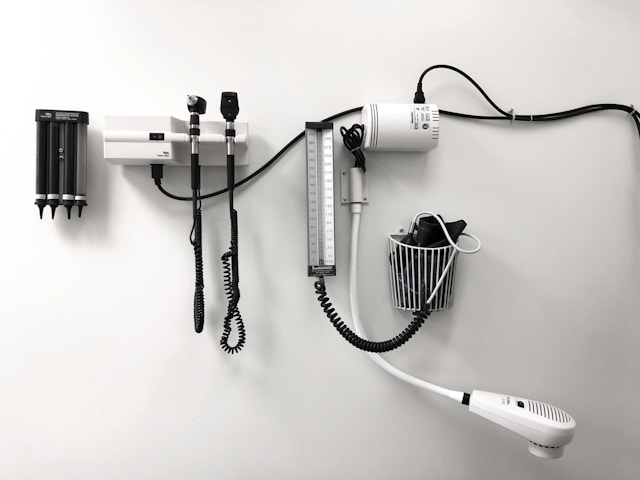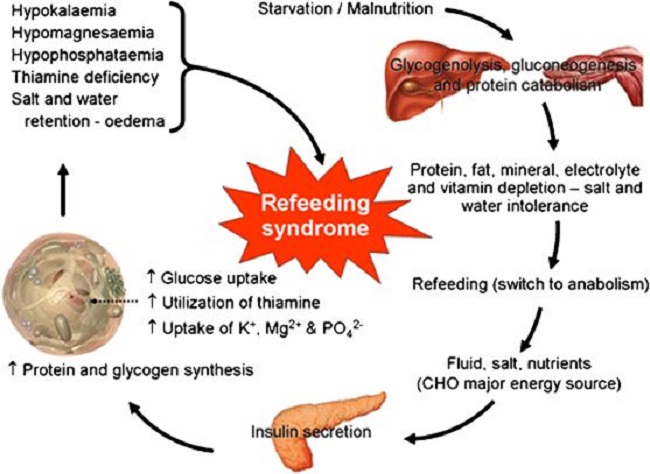You Are What You Say
Corporate-speak infests healthcare. Buzzwords invaded medicine thirty years ago, but the infection was contained to hospital administration. Now healthcare is controlled by insurance companies, global technology firms and for-profit outfits of all sorts. Business slang, the jargon of greed, is fouling the language of care.
The corporate-speak contagion spread, pushed from hospital C-suites to the wards. Doctors and nurses were encouraged to “drive behavior”. Or “align incentives”. Or even “align incentives to drive behavior while leveraging assets”. All business claptrap.
Except it’s harmful claptrap. Corporate clichés exterminated medicine’s touchstone words. Talk of profit margins, marketing and competition doesn’t inspire trust. Technobabble isn’t the language of compassion. It’s hard to translate caring into bureaucratese.
Sticks And Stones
Healthcare is not innocent. Doctors and nurses stand accused of using baffling shoptalk. We have our own lingo, phrases, acronyms and abbreviations. Most are shorthand. Many are glib and dehumanizing:
– The MI in 415 (The patient in Room 415 has suffered a heart attack.)
– Gomer (Elderly and confused patient, almost always male; the word has uncertain origins.)
– Frequent fliers (People who show up in the emergency room too often.)
– Treat and street (Rapidly care for emergency room patients and get ‘em out the door ASAP.)
We’re equally scathing about each other:
– Gas passer (Anesthesiologist)
– Jock (Orthopedic surgeon)
– Scoping for dollars (Gastroenterologist)
– Pediatrician = Geriatrician = Veterinarian (Self-explanatory)
Dark humor helps cope with stress in healthcare; the daily onslaught of pain, heartbreak and frustration most clinicians face. But our slang doesn’t reduce patients to cost centers or data points.
Let Those Who Are Without Sin
Buzzwords are business parasites. They swarmed into health care along with big tech, hospital systems and payers. Like fleas on rats. The medical-industrial complex treats patients, physicians and nurses as costly business problems to be solved. Threats to profit margins.
Hands-on care of sick patients is the most important duty in medicine and the most expensive. Care that relieves suffering is the heart of medicine. But hospital stays are costly. Skilled professionals aren’t cheap.
The biggest boosts in profits come from the greatest reductions in costs. Patients and clinicians quickly run up the tab, so chopping their costs yields the largest earnings lift. In theory, anyway.
The Words
Corporate-speak blurs reality. It reduces accuracy to vagueness and sucks humanity from patients and clinicians. Hundreds of business buzzwords have infiltrated healthcare. More slither in daily.
A few dozen pop up constantly. Ten of the worst offenders are featured.
What The Top Ten Words Have in Common
The word fleas share some traits:
– The words have common meanings in everyday speech of ordinary people.
– They replace ordinary words, either to sound official or important.
– Many started life as nouns and transmogrified into verbs.
– The words are used broadly across the medical-industrial complex by insurers, policymakers, technology consultants and bureaucrats.
– The words are rarely used by bedside doctors and nurses who are up to their elbows in…well…you get the idea.
They’re in alphabetical order. Too difficult to rank them by their jargon quotient.
Nonsense Means No Sense
ACCELERATOR: In common use, an accelerator or gas pedal powers a vehicle by regulating gas flow to the engine. The car’s speed is controlled by how much pressure is applied to the accelerator pedal.
Now healthcare accelerators are investors and venture capitalists. Accelerators feed money to health tech start-ups in hopes of funding the next great thing. Most have wads of money but usually no clinical experience. Many envision their lives as billionaires while foisting more useless apps on medicine.
Suggested Replacement: Investor
ALIGN(MENT): Align as a verb means arranging objects in a straight line. The noun alignment, used in everyday speech, refers to the wheels of a vehicle. Mention your car needs an alignment job and most Americans will understand the reference.
Align and alignment are used with equal frequency in healthcare. Both noun and verb substitute for “agreement”. As in: “We must align penalties to drive cost savings and leverage our economic power.”
Suggested Replacement: Agree(ment)
CROSSWALK: Crosswalks are paths showing pedestrians the safest route across busy streets. Often striped, outlined or marked in some way, crosswalks are usually placed at intersections.
In corporate-speak, crosswalks (noun or verb) are virtual pathways linking healthcare data from one source to another: “Need to crosswalk lab data siloed in Claims over to Disease Management to model diabetes programs.”
Suggested Replacement: Link
DISRUPT: Small children are scolded for disruptive behavior. Their parents often hear from teachers who counsel evaluation for hyperactivity disorders. Adults accused of disruptive behavior can be cited for disturbing the peace.
Now, entrepreneurs who disrupt healthcare are praised. Sought after. Causing turmoil, upending patient-clinician relationships and disregarding the basics of good care are rewarded. Policymakers are apt to say, “Need more accelerators to fund the disruptors and get a value-add on our deliverables.”
Suggested Replacement: Change
DRIVE: Driving is the act of operating a vehicle and navigating from one place to another. Physical forces drive objects the way steam powers old locomotives or wind spins pinwheels. Cowboys drive livestock from the range to the corral.
People are herded like cattle, too. The medical-industrial complex talks about driving all sorts of things; behavior, cost cutting, alignment, disruption and wellness. People aren’t as docile as cows—usually. They’d refuse to be driven if not for rewards and punishments. In business slang: carrots and sticks.
Suggested Replacement: Influence
LEVERAGE Before MBAs evolved as a life form, leverage meant the use of levers—shovels, spades, crowbars—-to help move heavy objects. In physics, levers multiply force.
In healthcare leverage is coercion. Leverage manipulates behavior of patients and clinicians. Patients are leveraged with, yup, carrots and sticks. Doctors need more robust persuasion. Threats to income, their practices or their hospital privileges are necessary. As in: “Gotta leverage market position. Get docs to align with the cost synergies. Can drive ‘em with privileging denials.”
Suggested Replacement: Use
MODEL: Models might conjure different images for men and women. Men remember building models of race cars or jets when they were boys (or sniffing the glue anyway). Women think of skinny, glamorous people strutting in front of impassive fashion editors. All wearing absurd clothes with astounding prices.
Computers spit out data to build health care models. Model can be used as a noun or verb in corporate-speak. Models are now theories and fairy tales dreamt by policymakers and analysts. Models control vast oceans of medical spending. No matter they often have no tether to reality. Policymakers might say, “Let’s get the 30,000-foot view and model how we align ER physician behavior to drive high value admits.”
Suggested Replacements: Think (v.) or Thought (n.)
ROADMAP(PING): Roadmaps are relics of another age. Maps, printed on large sheets of paper, were folded to fit car glove compartments. Roadmaps have about 2,000 possible refold combinations, frustrating small children and adults alike. Google Maps don’t need refolding. Paper roadmaps don’t need internet connections. That’s useful here in the American Outback (Intermountain West) where I live.
Business roadmaps, noun or verb, are virtual paths leading to some goal. Or roadmaps can be instructions. Or some program or strategy. Roadmaps are prized across healthcare: “Let’s roadmap our methodology, align it with Finance’s, then cascade the model.”
Suggested Replacement: Plan
SILO(ED): Silos are round towers used to store grain or compressed green crops used for animal feed in winter. Like sentinels, silos often stand close to barns. White silos next to red barns are quite picturesque.
Now virtual silos store data. Imaginary hoards of information, jealously guarded from invasions by competing factions in organizations. There is mystical belief that if data are freed from silos, health care’s problems will vanish. As in, “Need to align forces and create a roadmap to crosswalk data from the clinical silo to the admin silo to model synergies.”
Suggested Replacement: Files or Department
WELLNESS: Wellness is a state of good health. Thriving and flourishing. A benign word that once brought to mind playing children, healthy food, peaceful walks.
No more.
Corporate wellness programs have given the word an ironic edge.
Wellness programs have become coercive. Employees who value privacy can pay thousands of dollars more for health insurance by refusing to join the company wellness effort. Wellness programs cause stress and resentment, hardly conducive to a sense of well-being.
Suggested Replacement: Health (though calling the schemes health programs won’t fix the underlying problems).
Rewrite! Rewrite!
Back in Hollywood’s glamour days, if a film script wasn’t working, the director shouted for a rewrite. Well, healthcare’s new script isn’t working. We don’t need a rewrite—we need the old script:
– Do we agree the best way to change patient behavior is compassionately?
– Let’s use the trust people have in nurses to influence their health choices.
– Clinicians meet often to think and plan. Then find the best ways to give care by linking skills.
Healthcare has been reformed. Not for the better. No surprise, we’re speaking different languages. It’s time to say what we mean, mean what we say. In plain English.
We Need Your Help
More people than ever are reading Hormones Matter, a testament to the need for independent voices in health and medicine. We are not funded and accept limited advertising. Unlike many health sites, we don’t force you to purchase a subscription. We believe health information should be open to all. If you read Hormones Matter, like it, please help support it. Contribute now.
Yes, I would like to support Hormones Matter.
This article was published originally on September 29, 2015.


































